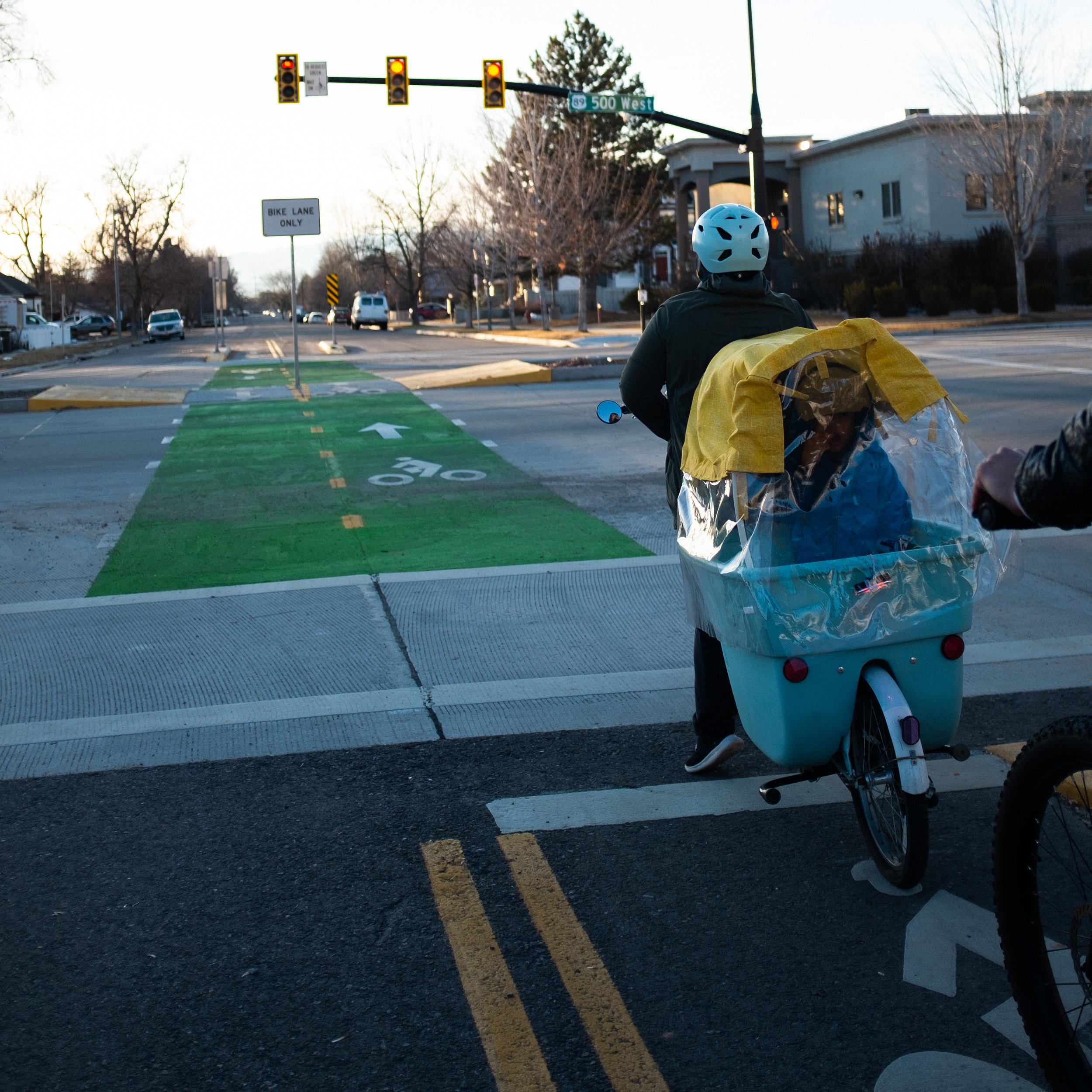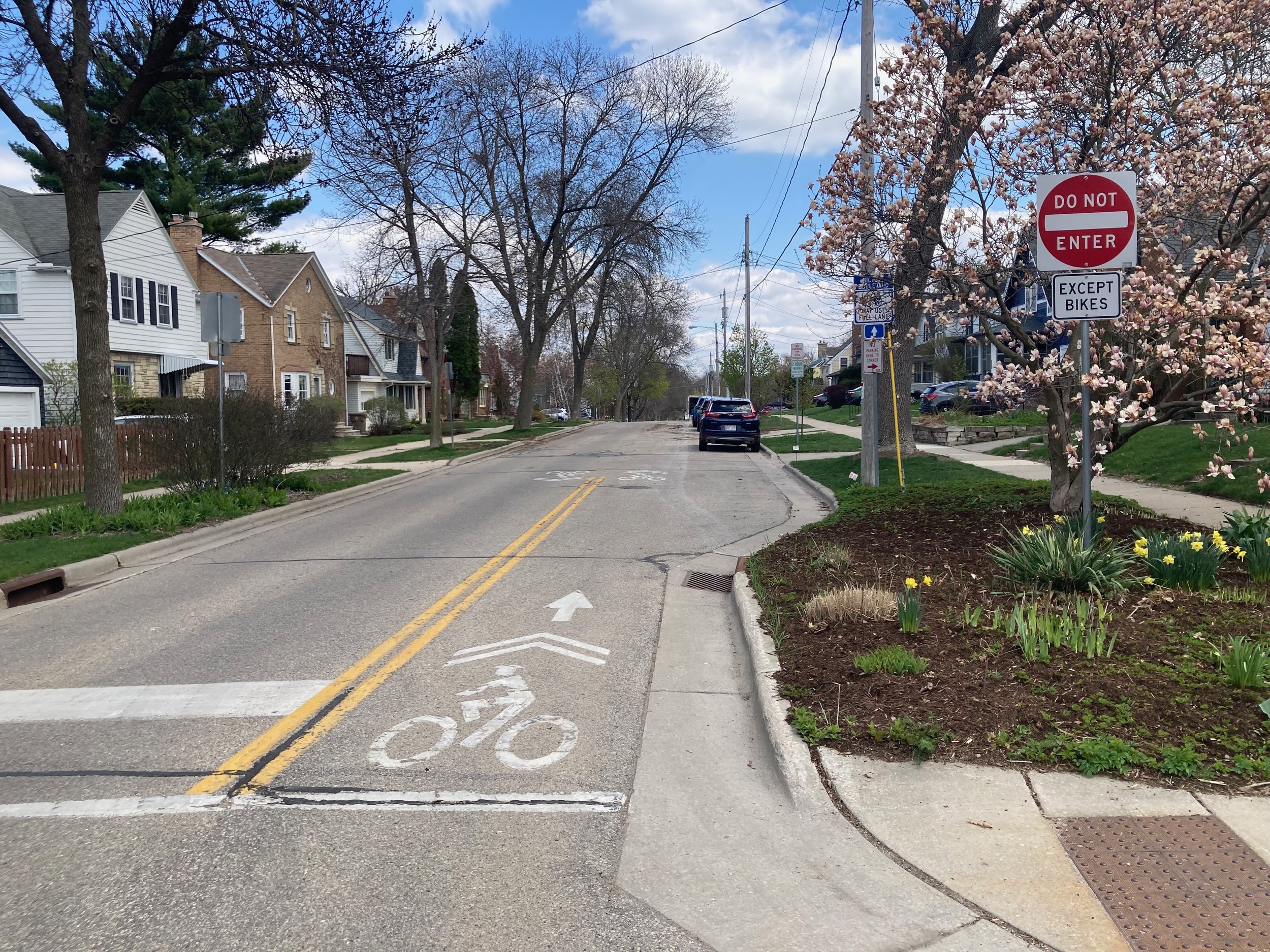
We call on the City to designate more Neighborhood Bikeways and to continue to improve our community’s new Neighborhood Bikeways.
Neighborhood Bikeways
Neighborhood bikeways are low-volume, low-speed streets designed to prioritize people who are biking, walking, and rolling by using design elements such as curb extensions, signage, shared-lane pavement markings, protected crossings at busy crossings, mini-roundabouts, and traffic diverters. In Provo, think 200 E, 800 E, 300 W, and 940/960 N, though all of these neighborhood bikeways need further improvements.
“The 200 E Bikeway is my favorite route between BYU and downtown.”
-George Handley, BYU Professor and City Councilor
Benefits of Neighborhood Bikeways
Comfort
Provide a comfortable shared street environment for people of all ages and abilities to get around.
Protect Neighborhoods
Designed to fit neighborhood streets with minimal parking impacts, prioritize local trips, and reduce cut-through traffic.
Connectivity
Help people safely and comfortably get to popular destinations while reminding drivers to share the road.
Safety
Less automobile traffic and lower automobile speeds make streets safer for everyone. Neighborhood bikeways connect people to schools, parks, and business districts.
Sustainability
Enable transportation methods other than driving, decrease pollution, and improve air quality.
Elements of Neighborhood Bikeways
Curb Extensions
A traffic calming measure that extends the curbs at intersections to slow automobile speeds, shorten crossing distances, and enable pedestrians and bicyclists to easily cross streets as shown on 200 E.
Mini Roundabouts
A circular intersection reduces traffic speeds by requiring motorists to move cautiously through conflict points.
Protected Crossings
Bike intersections like those at 300 N on State Street, 700 N and 300 S on 200 E help those on bikes and scooters and on foot safely traverse busy intersections.
Diverters
Paint/flex posts, concrete, or signage that prohibits automobiles from turning or traveling into a Neighborhood Bikeway to reduce automobile cut-through traffic, but allow people bicycling to do so (as seen above in Madison, WI).
Active Transportation Cut-Through Paths
Paths that connect different sections of Neighborhood Bikeways such as the 300 W Rec Center/Power Department Park Path and the 800/900 E Crossblock Path as shown above.
Wayfinding Signage
Signs that help bicyclists stay on designated routes and guide them to popular destinations (as seen here in Minneapolis, MN).
Chicanes
A series of curb extensions, curb points, parking bays, or landscaping features placed on alternative sides of the road to create narrowed, curved segment of roadway to produce traffic calming (as in Boise).
Sharrow Markers
Painted markings on paved roadways to provide information and guidance to bicyclists and drivers and to remind all that the street is shared space and bicyclists may take the lane.
Speed Cushions
An elevated part of roadway, similar to the raised crosswalks on Center Street, intended to slow automobiles (seen here in Madison, which gets a lot more snow than Provo).
What is Needed?
Where would you like to see a Neighborhood Bikeway in your city?
-Urge the City to continue to make improvements to our existing Neighborhood Bikeways: 200 E, 800 E, 300 W, and 940/960 N
-Urge the City to develop more Neighborhood Bikeways, especially east-west routes such as E 300 N and 400 S, as well as 700 W to connect Timpanogos and Franklin Elementary, Dixon, and Exchange and Pioneer Park.













